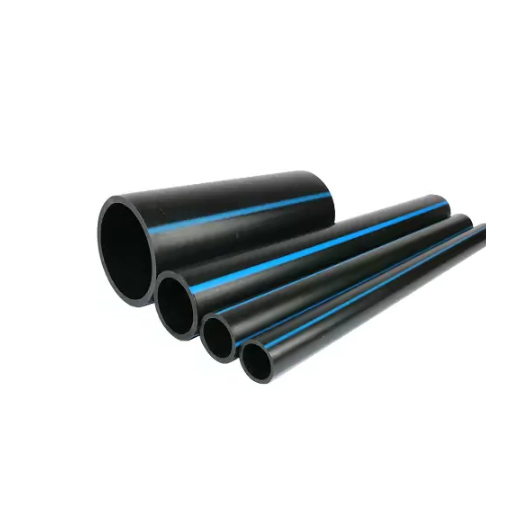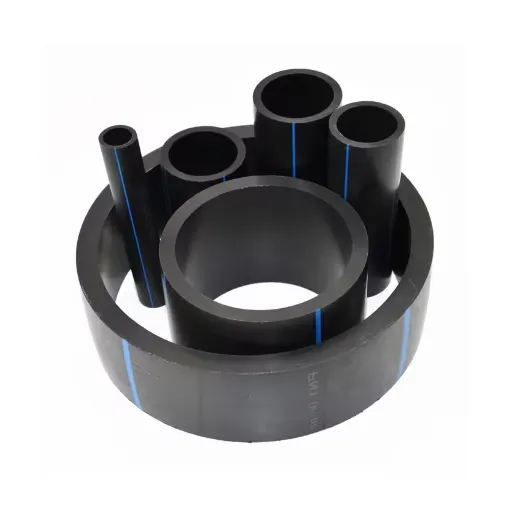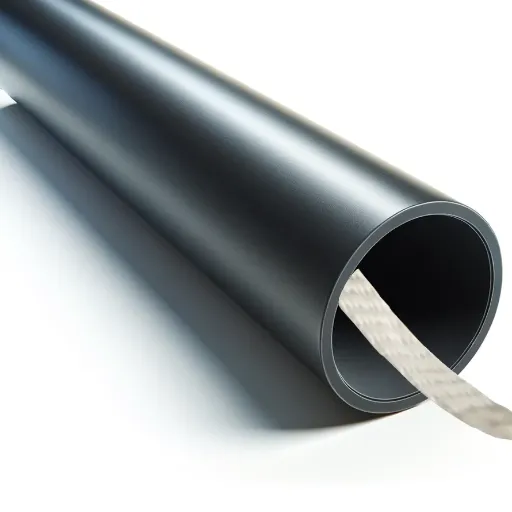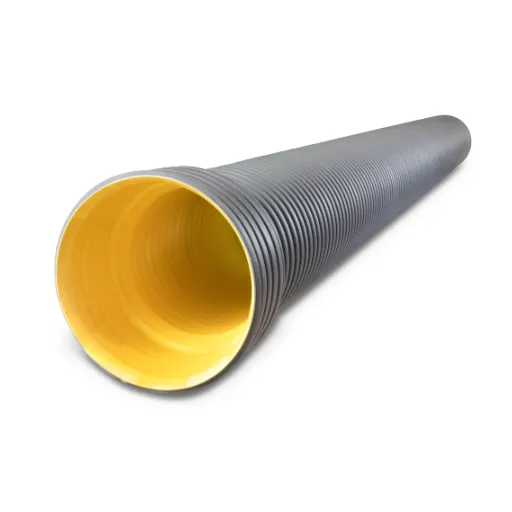High-Density Polyethylene (HDPE) pipes have revolutionized modern infrastructure with their durability, flexibility, and resistance to corrosion. However, achieving optimal performance from HDPE piping systems requires precise joining techniques tailored to the material’s unique properties. This guide is designed to provide an authoritative overview of HDPE pipe joining methods, exploring the most effective techniques and tools for ensuring reliable, long-lasting connections. Whether you’re managing large-scale pipeline installations or smaller industrial projects, understanding these methods is critical to maintaining the structural integrity and efficiency of your system. Read on to uncover the best practices and essential considerations for working with HDPE pipes.
What Are the HDPE Pipe Joining Methods?
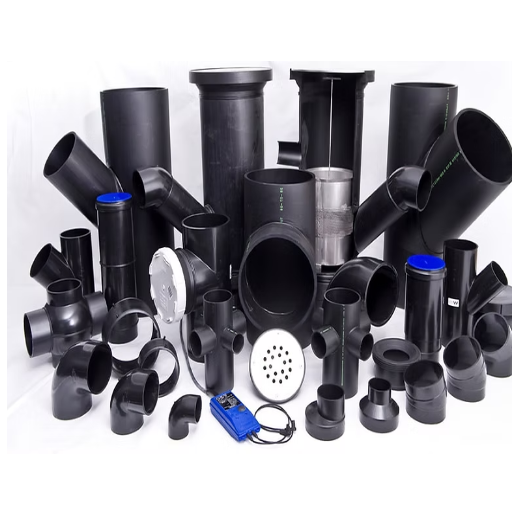
Understanding the Joining Method for HDPE Pipes
The joining of high-density polyethylene (HDPE) pipes can be done using a number of reliable methods, the most prevalent which includes heat fusion, electrofusion, and use of mechanical fittings. Each of these methods is advantageous in a different way and is appropriate for different situations depending on the requirements of the project, the environment, and safety considerations.
- Heat Fusion Method: The most trusted method of joining HDPE pipes is by using heat fusion. This technique requires the application of heat to the ends of pipes so that they melt and fuse under pressure, forming a joint. The strength of the fusion joint is often stronger than the pipe material itself, which providesa seal and durability. Heat fusion types comprise butt fusion, saddle fusion and socket fusion which are designed to specific system configurations and pipe diameters.
- Electrofusion Method: Electrofusion is a more modern sophisticated technique utilized in scenarios where more control is needed. This method uses special fittings with electrical heating elements. The heating parts are triggered and they melt the surface of the fitting and the pipe to bond them together when connected to an electrofusion processor. Electrofusion is mainly useful for confined spaces or repair areas because of its compact tools and precise control over welds.
- Mechanical Fittings: Mechanical fittings offer a dependable yet non-permanent method to interconnect HDPE pipes. These fittings employ compression or locks to hold the pipe’s closure tightly. While not as strong as heat or electrofusion, mechanical fittings are expedient and convenient for temporarily set up or frequently maintained projects. They are also suitable for spaces where fusion processes cannot be performed.
Careful consideration of the project conditions when selecting a step ensures engineers and technicians the dependability, efficacy, and enduring nature of the HDPE piping systems.
Types of HDPE Pipe Joining Techniques
HDPE pipes (high-density polyethylene pipes) offer diverse linking strategies. Each of them is appropriate for particular working conditions, pipe dimensions, pressure of operation, and project requirements. The most popular methods are butt fusion, electrofusion, socket fusion and use of mechanical fittings. Each method should be studied in detail for planning, reliability, and performance of the piping systems.
- Butt Fusion: Butt fusion remains the most common approach to HDPE pipes fusion. It consists of heating the ends of the pipes to the molten stage. The heated ends are subsequently pressed using a fusion machine specialized in butt fusion fusions. This leads to the creation of a joint of two pipes without seams. Butt fusion is considered strong, durable, leak-tight weld technique. Weld technique ensures high-pressure performance and is ideal for long application periods without redundancy. Correct alignment of parts and their optimal servicing in heating devices are factors in the weld’s success.
- Electrofusion: Electro and butt fusin differ because they do utilize different techniques of welding. In this case, galvanism provides heating of the joining surfaces. The method uses a special fitting with metallic coils that serves as a heating element. Application of current leads to melting the piping surface as well as the fitting, thus bonding both surfaces. Joining of surfaces may be performed in restricted spaces, making this method relatively advantageous. Its cost efficiency may not stack well compared to butt fusion if price is concerned without accounting the final product features. Usage is associated with high standards of quality confirmation from the national bodies checking the works and structures.
- Mechanical Fittings: Mechanical fittings use clamps or compression rings to create secure connections without heat. Although less rigorous than fusion techniques, these methods are quicker to implement and more useful for provisional setups or installations that are often taken apart and put back together. Also, these fittings are convenient in areas where welding cannot be done.
HDPE piping systems are able to achieve optimal performance, long lifespan, and minimal maintenance by selecting a joining method tailored to the project’s technical and operational requirements.
The Role of HDPE Pipe Fittings in Joining
These fittings help in making the tighter and stronger seal critical for processes like water delivery, gas delivery, and industrial fluid transfer. Additionally, the HDPE pipe fittings made must also fit the basic attributes of HDPE pipes which include flexibility, light weigt and resistance to corrosion.
Another very important feature of HDPE pipe fittings is that they can be joined by several methods to the pipe; Seamless-butt fusion, Electro-fusion, and Mechanical joining are examples. For Socket-Butt fusion and Electro-fusion fittings, these fittings are almost always preferred to permanent installations because, whatever the time, the integrity of the system will be properly preserved. Installation and disassembly are straightforward with these parts, so temporary arrangements with such units can be done to save costs in permanent installation or systems needing frequent changes.
Selecting an appropriate pipe fitting contributes to the overall performance of the entire system. Some of the most important characteristics for selecting compression fittings include pressure rating, temperature tolerance, and chemical compatibility. Properly placed HDPE pipe fittings help mitigate leaks, lower maintenance expenses, and enhance the service life of the piping system, guaranteeing safety and enhanced efficiency during operations. These fittings tailored to suit specific requirements of different projects go a long way in optimizing the effectiveness of the HDPE piping system as a whole.
How Does Socket Fusion Work?
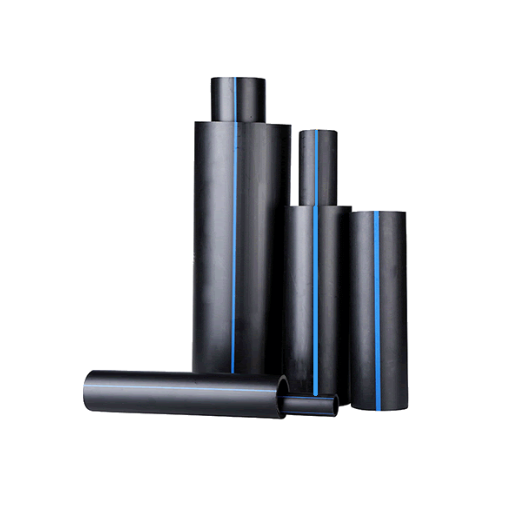
Preparing the Pipe and Fitting for Socket Fusion
To ensure that a reliable socket fusion joint is obtained, proper preparation for this process is essential. It starts with cutting the HDPE pipe to the desired length, aided by a pipe cutter saw. The cut should be straight without any burrs, and precise cutting increases the chance of proper alignment during fusion.
Cleaning of both the pipe and fitting is required to the level that will not compromise the joint integrity; dirt, grease, and other contaminants must be removed. Usually isopropyl alcohol and lint free cloths do the job. Followed by cleaning, inspection is also critical; scratches, deformations, or any inconsistencies must not be present on the pipe and fitting which would impact the connection.
Marking the outer side of the pipe and the inner side of the fitting indicates the correct depth of insertion. This step makes sure that the materials are aligned properly during heating and fusion – the movement of fusion materials and the scope for material flow are critical during this phase. For advanced surface preparation, depth gauges or chamfering tools can further optimize surface bonding up to the required standards.
During the preparation phase, following the manufacturer’s guidelines and industry standards helps to make sure that the socket fusion process is carried out safely and will provide the desired long-term strength of the fusion joint. Careful execution during this phase directly impacts the operational efficiency and longevity of the piping system.
Using a Fusion Machine for Socket Fusion
Operating a fusion machine for socket fusion requires specific methods to be followed precisely to reach proper results. The process starts by picking a fusion machine that corresponds with the piping materials and the diameters of the parts involved. Today’s fusion machines have the latest features like temperature control, which ensures that the heating elements within the machines do not fluctuate from their set points. These set points depend on the type of material being heated; for polyethylene (PE) or polypropylene (PP), temperature is set to fall between 500°F and 570°F, or between 260°C and 300°C.
Like any other technique, fusion has its enhancements that need to be properly aligned in this case— pipe and fitting. If they are not aligned properly, cross cross-sectional view of the joint will not be rounded, therefore causing misalignment. Most modern devices are provided with alignment aids, such as clamps, which can lock the parts during the assembly phase and the joining phase of the pipes. You have to be very careful during the heating stage because it is all about time, and the specific period must be set against the pipe’s wall thickness and structure. Too much or too little can destroy the joint.
As the heating element approaches the designated temperature, the fitting and pipe should be pressed uniformly and firmly against the heater so that melting can be achieved evenly. After the steps are completed, a positive pressure is applied during the component removal so that a violent ultrasound is generated which leads to robust fusion. The joint involves cooling in which the bond becomes stronger during the cooling segment, which is also vital for the joint and cooling in this case is a step.
Regular maintenance activities for the fusion machine, such as removing grime from the heating elements and a calibration check, ensure the proper function of the machine. Following technical steps minimizes the operational interlocks due to gluing defects and increases the trustworthiness of the entire piping engineering setup.
Ensuring Proper Pipe Connection with Socket Fusion
Assembly Socket Fusion is yet another type of plastic welding. It is one of the most accurate in terms of procedure as it involves a high level of precision. In the case of pipes, precision joint alignment is critical. It is necessary to execute a series of steps which safeguards the joints from failures during the normal course of operation.
- Selection and Preparation of Compatible Materials: Check for pipe segments connections as well as fittings. Make sure they belong to the same class of polymers, such as polypropylene or polyethylene. Before starting the fusion, clean the pipes and tools to reduce them to their simplest, cleanable surfaces. Even the smallest bits of polish will greatly diminish the quality of bonding; therefore must be cleaned.
- Tool Maintenance and Calibration: Make sure to check the pipe cutting tool and ensure they are cutting precisely without leaving any deformed edges and burrs. From time to time, check that the socket fusion machine is operational in a calibrated state. Check electronically the temperatures of heating elements and be sure to check the above range for the specified material around 500°F.
- Proper Heating Time: Proper time must be allocated for heating where it should be trimmed to the manufacturer’s specifications alongside the thickness of the pipes wall. Improper joint tightening could lead to material weakening whilst excessive tightening could lead to increased block push down the material. Defeats the set goal therefore timers should be employed.
- Controlled Joining Pressure: In the joining phase, a uniform and controlled pressure must be applied to ensure proper fusion without inducing stress within the weld zone. The pipe and fitting must be joined immediately after heating to prevent heat dissipation.
- Cooling and Inspection: Fused joints should be left undisturbed for external forces or movement to cool naturally for a sufficient time. Visually inspect the area post-cooling for irregularities like misalignments, voids, or non-appearing gaps. Critical systems can employ non-destructive inspection techniques like ultrasonic tests for added assurance.
If these measures are followed and combined with proper staff instructions, the reliability and longevity of socket fusion connections can be improved dramatically. Along with other industry norms, these make the pipe fusion process reliable.
When to Use Butt Fusion for HDPE Pipes?
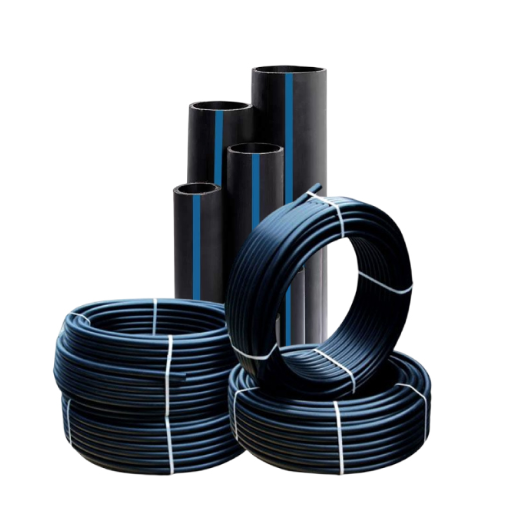
Advantages of Butt Fusion Method
The butt fusion technique remains one of the most established methods for joining high density polyethylene (HDPE) pipes. It forms a joint that is strong and isotropic by heating the pipe ends and then pressurizing them to apply a bond. The principal merit of butt fusion is perhaps the strength of the joint achieved, which is equal to or greater than that of the original material. This strength is important in the more critical applications such as waterworks, gasworks, and industrial piping systems.
The other significant advantage of the butt fusion method is its range of application. It covers a lot of diameters and wall thicknesses of the pipes, which makes it attractive for varying scope infrastructure projects. Moreover, it eliminates the need for other fittings circling the joints, which in turn reduces material expenditure, lowers the possible points of weakness and restrictions to flows. Concerning butt fusion, the process is certainly faster and carries more dependability in executing the same tasks and is therefore most useful for modern piping systems.
The addition of sophisticated fusion equipment improves accuracy even more because temperature, pressure, and quality control are monitored automatically. These technologies provide complete assurance of a defectless fusion result, thereby enhancing the expected lifespan and performance of the pipeline.
Considering these factors, butt fusion is an indispensable technique for constructing HDPE piping systems that are maintenance-free and withstand leaks irrespective of the environment or operational conditions.
Steps in the Butt Fusion Process
Quality butt joint fusion of HDPE pipes considers the materials. It also requires following precisely controlled processes, which include the following:
- Preparation of Pipe: Each pipe joint undergoing the butt fusion process is inspected and cleaned for any potential contaminants. They must also smoothen the ends of the pipes through facing to ensure that all trimming results in parallel, smooth, and congruent surfaces.
- Alignment and Clamping: The pipes are securely aligned and locked in position in the butt fusion machine. This step guarantees that the correct fusion will be achieved. A secured alignment also helps to avert negative results, which might cause a distorted joint.
- Heating: A non-stick coated heating plate is introduced between the pipe ends. Depending on the material and diameter of the pipe, specific heating temperatures should be set. Within all set parameters, the ends of the pipes are pressed until a proper molten layer of fusion is achieved.
- Removal of the Heating Plate: The heating plate should be taken away from the assembling area without any misalignment of the pipes ends. Such a step requires utmost care and haste to guard against cooling outside, unwanted heat loss, and unwanted exposure to the environment before the actual fusion begins.
- Joining: The ends of the pipes are put together and pressed under a circumferential cell pressure at once. The applied pressure permits uniform material flow concerning the strong bond required, hence ensuring a sound and uniform bond. The joint is cooled while the pressure is still maintained.
- Cooling and Inspection: The joint absorbs energy to cool for some time depending on the type of the pipe, the material construction, and the environmental conditions surrounding. When it has cooled, the joint undergoes a visual examination to check whether it is smooth and devoid of any discontinuities like voids or misalignment. Other joint integrity checking techniques like ultrasonic or pressure testing may also be used.
Operators, by these systematic procedures along with modern technology in butt fusion welding have been able to attain dependably strong and sustainable joints to HDPE pipes in all industrial and ecological uses, and many more features.
Common Issues and Solutions in Butt Fusion
One of the challenges while practicing butt fusion welding is that the pipes are not aligned correctly. Misalignment can cause joint weakness which might result in failure during operational processes. To address this problem, operators need to ensure that the ends of the pipes are cleaned, aligned, and trimmed before heat and pressure is applied. The problem can be controlled significantly by using proper alignment tools, adequate tools, and routine calibrations which guarantees a consistent weld.
Another common problem that occurs is that the ends of the pipes are not heated enough, or they are heated too much during the melting process. With inadequate heat, the bond temperature is too weak to secure the work-pieces, but with excessive heating, the work-pieces can be degraded, burnt on the surface, or too much bead can be built up. Operators must follow the fusion control parameters required by the manufacturer such as temperature, pressure, and time, which ought to be followed. Other means to avoid such problems would be using highly automated machinery with precision temperature settings.
Lastly, contamination of the pipe ends before fusion is yet another persistent problem. Particles like grit, water, or oil located on the surface of the pipe pose a risk to the fusion process and may result in weak joints or voids. An operator needs to clean both ends of the pipes and, during subsequent steps, make sure that the ends of the pipes do not get dirty again. Specialized scrapers and cleaning materials tailored for industrial use are appropriate because they safeguard the purity of the pipes. A well-structured inspection procedure before welding that focuses on cleanliness helps in avoiding contamination, which increases the quality of welds.
What Are the Applications of HDPE Pipes?
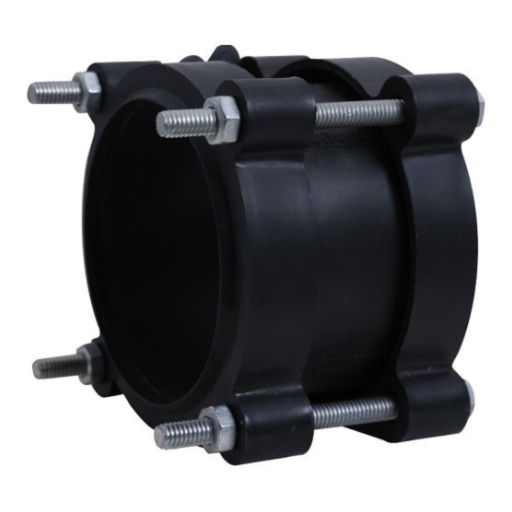
Understanding Where HDPE Pipes Are Used
Industries and applications utilize high-density polyethylene (HDPE) pipes extensively due to their exceptional durability, flexibility, and corrosion resistance. One of the most common uses is in the water supply and distribution systems. Because HDPE pipes are non-toxic and chemically inert, they can be safely used to transport potable water. Moreover, HDPE pipes are increasingly used in agricultural irrigation systems, where their lightweight nature and ease of installation are operational advantages.
Outside water systems, HDPE pipes have a wide application in the distribution of natural gas because they are prone to less leakage and can withstand greater pressure than older metal pipes. Their chemical resistance makes them an indispensable choice in industries for the transportation of liquids, chemicals, and waste materials. Also, HDPE pipes are used in mining for the transportation of slurries due to their abrasion resistance and long-term reliability.
The use of HDPE pipes is increasingly seen within renewable energy initiatives such as geothermal heating systems, where the pipes serve as thermal energy transport conduits. Their versatility also includes infrastructure works like cable and sewage systems, where durability and minimum servicing are essential. Hence, the use of HDPE pipes benefits many industries by providing a sustainable, efficient, and inexpensive answer to contemporary piping problems.
Benefits of HDPE Pipe Systems in Various Sectors
HDPE (High-Density Polyethylene) pipe systems offer unparalleled benefits to numerous civil industries by providing innovative and affordable solutions. One of the major manufacturing advantages of HDPE pipes is their exceptional resistance to chemicals and corrosion, which makes it possible to transport a wide variety of liquids, including potable water, wastewater, and even dangerous chemicals. Moreover, their flexibility greatly reduces impact damage during seismic activities or intense mechanical stress, while their impact resistance further reduces damage during installation and operation.
The exceptional strength of HDPE pipes allows them to sustain approximately 50-100 years under normal operating conditions, which in turn reduces the long-term maintenance cost of infrastructure projects. Being lightweight greatly simplifies transportation and installation, thereby minimizing both labor and logistical costs. Furthermore, all costs aside, the use of HDPE pipes is more environmentally sustainable because they are fully recyclable and consume less energy in the production process compared to traditional materials like concrete or metal.
Trenchless techniques, like horizontal directional drilling (HDD) and pipe bursting, showcase advanced applications. These techniques reduce the degree of unsightly surface disruption, thus allowing the utilization of HDPE pipes in metropolitan centers where controlled surface infrastructure is necessary. In addition, their suitability with fusion welding methods assures no leakage at the joints, which is vital for systems conveying sensitive resources such as gas and water.
For agricultural purposes, HDPE pipes are considered the best option for irrigation because they are UV resistant and can endure different climate conditions. The mining sector also derives value from the pipes in terms of their abrasion resistance, especially in the transport of slurries and tailings. On the other hand, the energy sector uses HDPE pipes in geothermal systems and as housing for electric and telecommunication cables, which indicates that the best pipes are used for applications widely differing from each other. Industries incorporating HDPE pipe systems attain better operational efficiency, lower ecological footprint, and enhanced savings over time.
Why Choose HDPE Pipe and Fittings?
High-Density Polyethylene (HDPE) piping, along with its associated fittings, proves to be extremely beneficial in the management of water in addition to enterprises such as mining, energy, and agriculture. The overall integrated benefits associated with the HDPE systems are extremely helpful in increasing the efficiency of the system. The pipes and fittings resist corrosion remarkably. In addition, the chemical as well as microbial reactions are retained, which minimizes the operational halts in comparison to concrete and steel.
Furthermore, HDPE pipes and their fittings having ultra-low densities possess extremely high strength. Added flexibility allows HDPE to withstand extreme internal pressures as well as external stresses. This lightweight nature further aids in the transportation and installation of the pipes. The adjustable nature of the joints decreases the likelihood of joint malfunction in the case of some harsh scenarios, such as shifting load conditions. The precision engineering associated with HDPE fittings adds to the efficiency of the entire system because they guarantee leak-proof mechanisms, which minimize resource wastage.
In comparison to alternative materials, the entire procedure for producing these pipes emits significantly lower amount of greenhouse gases. Also, the pipes can be recycled entirely enabling strategic goals to preserve the environment. HDPE pipes can sustain for more than 50 years reemphasizing the trust associated with using it for framing the infrastructural projects across multiple domains.
The application of various engineering technologies, in addition to design standards, in HDPE pipes and fittings enhances system efficiency and performance. At the same time, it meets industry challenges such as durability, cost reduction, and environmental friendliness.
How to Ensure Strong Pipe Joints?
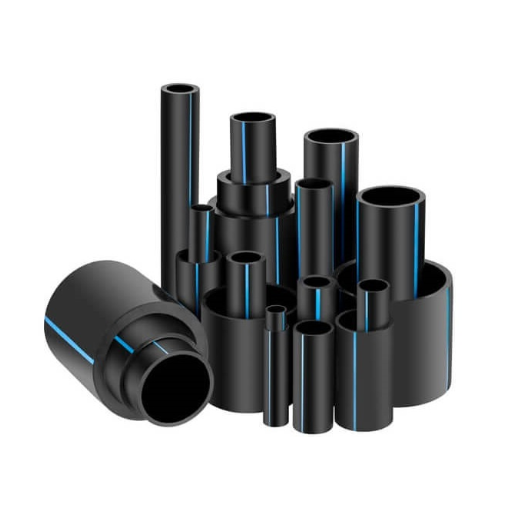
Techniques for Ensuring Quality Pipe Joints
Maintaining operational efficiency and the dependability of piping systems requires preserving the integrity and strength of pipe joints. For HDPE and other piping materials, multiple techniques have been developed to create reliable leak-proof connections based on different applications and operating conditions.
- Butt Fusion Welding: Butt fusion joins two pipe ends using heating under a particular temperature and pressure. This process comes with unique challenges because it needs uniform heating devoid of weak spots. Certain cooling constraints require industry compliance in terms of standards.
- Electrofusion Welding: This process employs specialized fittings that possess electrical resistance wires within them. A strong, seamless bond is formed where the current is initiated since the wires heat and melt the associated pipe material. Although electrofusion is highly efficient in tight spaces, it does, however, require exacting equipment and detailed training for the operators to avoid being parallel or being incorrectly fused.
- Mechanical Joining: The use of mechanical joints, such as flange couplings and flange type adapters, can substitute for thermal processes. Their installation is simple and doesn’t demand much in the way of tools, which makes these systems ideal for flexible or quick connection scenarios. Proper torque application, in conjunction with the use of adequate materials, is crucial in order to prevent joint failure under applied pressure.
- Inspection and Testing:The use of fused or mechanically welded sections undergo ultrasonic inspection to evaluate defects and assess weaknesses. Active maintenance paired with routine checks establish and sustain the strength of the joints over time during operations.
The combination of these sophisticated methods with strict quality criteria would greatly minimize failures, enhance system longevity, and piping performance across multiple systems once adopted. These factors influence the selection of a particular method alongside other project requirements, environmental considerations, or operational needs.
Inspection of Pipe Surfaces Before Joining
Before two pipe segments are joined, the inspection of pipe surfaces is a vital step that guarantees the structural soundness and long-term dependability of the final assembly. This step involves checking surface conditions for physical and chemical properties and for flaws, which include cracks, pits, corrosion, or any other surface irregularities that can jeopardize the quality of the joint. Efficiency in detecting surface and subsurface defects is achieved through the use of modern non-destructive testing (NDT) techniques, including ultrasonic testing, magnetic particle inspection, and dye penetrant inspection.
It does not matter how surfaces are cleaned, as surface cleanliness is equally important. Either mechanical or chemical cleaning method, which eliminates oil, dirt, oxide layers, or residual coatings, achieves this. Proper preparation of the weld bevels or the joint faces eliminates irregularities and ensures that piece part tolerances are met, which aids uniform stress distribution during operational loads and enhances bond strength, particularly for welded or adhesive-bonded assemblies.
Advanced techniques, like the use of laser scanners or profilometers, enable the measurement of surface roughness and accurately assess dimensional tolerances. This is very critical in high-pressure or high-temperature systems because any surface preparation defect may result in catastrophic joint failure during operational load. Through a blend of thorough inspection to exacting standards and intelligent technology, industries achieve a greater level of quality control and assurance, thereby mitigating risks and extending the service life of piping systems operating under harsh conditions.
References
Frequently Asked Questions (FAQ)
Q: What is the most commonly used method for joining HDPE pipes?
A: The most commonly used method for joining HDPE pipes is heat fusion methods, which include butt fusion, socket fusion, and electrofusion. These methods ensure strong and reliable HDPE pipe joints.
Q: What are the benefits of using HDPE pipes?
A: HDPE pipes offer numerous benefits, including corrosion resistance, flexibility, lightweight nature, and a long lifespan. They are also environmentally friendly due to their recyclability.
Q: How do you prepare the ends of the HDPE pipe for joining?
A: To prepare the ends of the HDPE pipe, you must clean the external surface of the pipe, remove any debris or dirt, and ensure the ends are cut squarely. This preparation is crucial for a successful joining process.
Q: What is an electrofusion fitting, and how is it used to join HDPE pipes?
A: Electrofusion fitting is a technique used to connect HDPE pipes by using specialized fittings that have built-in electrical heating elements. When current passes through these elements, it melts the HDPE, joining the pipe and fitting securely.
Q: Can you explain the process of butt fusion for joining HDPE pipes?
A: Butt fusion involves heating the ends of the HDPE pipes using a welding machine until they soften, then pressing them together to form a solid joint. This method is commonly used for joining pipes of the same diameter.
Q: What are the different methods for joining HDPE pipes?
A: Various methods for joining HDPE pipes include heat fusion methods such as butt fusion, socket fusion, and electrofusion, as well as mechanical joining techniques like using flanges or compression fittings.
Q: How does socket fusion differ from butt fusion?
A: Socket fusion differs from butt fusion in that it involves inserting the pipe into a fitting instead of joining pipe to pipe. The pipe and fitting are heated and then joined, creating a strong and reliable connection.
Q: What precautions should be taken when using heat fusion methods?
A: When using heat fusion methods, ensure the surfaces of the pipes and fittings are clean and dry. The welding machine should be calibrated correctly, and the operator must follow safety guidelines to avoid burns or other injuries.
Q: Are there any limitations to using HDPE pipe joints in construction?
A: While HDPE pipe joints are strong and durable, they may not be suitable for high-temperature applications or where chemical exposure is significant. It’s essential to consider the environment and application requirements when choosing HDPE pipes.



